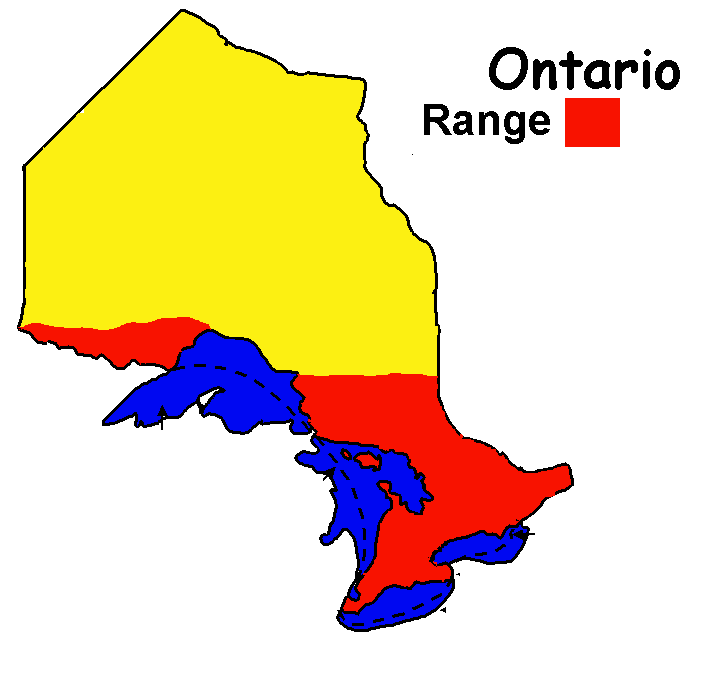Salamanders
Red-spotted Newt
 Notophthalmus viridescens viridescens
Notophthalmus viridescens viridescens - A small 7-10 cm newt.
- The yellowish to greenish brown newt has a scatter of black dots, and a series of larger black-bordered red spots, on the back. The belly is yellowish and covered with tiny black spots.

- This newt is found in quiet pools or slow-moving backwaters of rivers. Ponds frequented by newts are usually in woodland openings or in meadows, and have an abundance of submerged vegetation in which the newts can hide.
- The most interesting aspect of the newt's life history is its three-stage life cycle: aquatic larvae, terrestrial efts, and aquatic adult.
- There is a terrestrial stage in the newt's life cycle, which lasts several years, when it is known as an eft. The eft is orange-red and retains the black-bordered red spots down the back.
- Red efts are often seen on the moist forest floor and seldom enter the water. They produce a repelling substance that warns off other animals.
- Efts feed on spiders, caterpillars, flies, and invertebrates in the leaf litter. For example, one eft was found to have eaten as many as 2,000 tiny springtails
- Red-spotted newts hibernate under logs or under water and may remain active under the ice.
- They breed in April and May, and the eggs hatch in three to four weeks. Larvae transform and leave the water in August or September. Newt larvae feed on smaller larvae, daphnia, snails, mosquito larvae, and other small aquatic invertebrates.
- There is research into the interesting transformations for newt to eft. However it is not fully understood. In some populations the eft stage is omitted.













